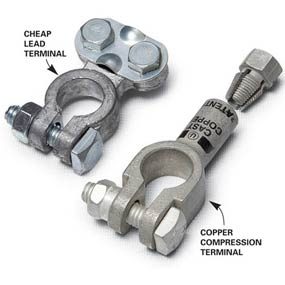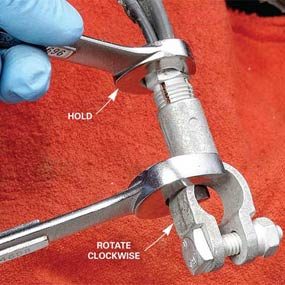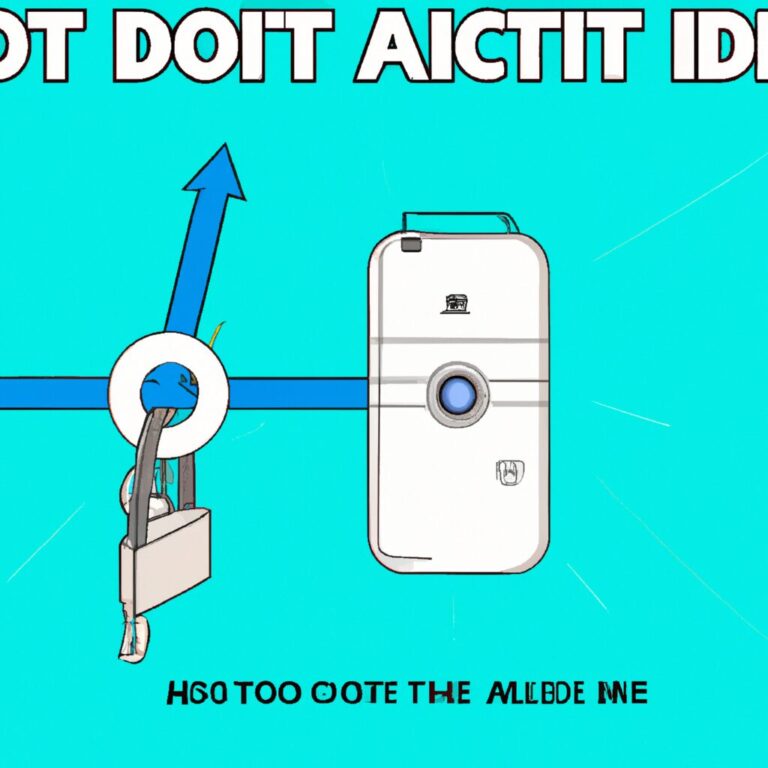How to Replace Battery Terminal Connector
To replace a battery terminal connector, disconnect the old one and attach the new connector securely. Follow safety precautions during the process to avoid any accidents or damage to the vehicle.
When your car’s battery terminal connector is damaged or corroded, it’s essential to replace it promptly to ensure proper functioning of the electrical system. This can be done easily at home with the right tools and steps. By following a few simple instructions, you can successfully replace the battery terminal connector and get your vehicle back on the road in no time.
Remember to always prioritize safety and double-check the connections to prevent any issues down the line.
Identifying The Problem
When it comes to your car’s battery, ensuring that the terminal connectors are in good condition is crucial. Faulty battery terminal connectors can result in a variety of issues, including difficulty starting your vehicle and power loss to essential components. In this section, we will discuss the process of identifying battery terminal connector problems and the importance of replacing faulty connectors.
Checking For Battery Terminal Connector Issues
Before replacing battery terminal connectors, it’s essential to identify any issues that may be present. Start by visually inspecting the connectors for signs of corrosion, rust, or damage. Additionally, check for any loose connections or frayed wires that may be affecting the functionality of the connectors. Use a voltmeter or multimeter to test the voltage and continuity of the connectors, ensuring that they are providing a strong and consistent connection to the battery.
Understanding The Importance Of Replacing Faulty Connectors
Replacing faulty battery terminal connectors is crucial for maintaining the electrical integrity of your vehicle. Faulty connectors can lead to voltage drops, which can affect the performance of essential electrical components. Additionally, corroded or damaged connectors can result in intermittently disconnecting power, leading to starting and electrical issues. By replacing faulty connectors, you can ensure a reliable and consistent electrical connection, improving the overall performance and reliability of your vehicle.

Credit: www.familyhandyman.com
Gathering The Necessary Tools
Replacing a battery terminal connector requires gathering the necessary tools like a wrench, pliers, and a wire stripper. With these tools in hand, you can successfully replace a battery terminal connector with ease.
- Wire brush to clean terminals
- Adjustable wrench to loosen nuts
- New battery terminal connectors
- Protective gloves to avoid skin contact
- Begin by collecting a wire brush to scrub the terminals.
- Make sure to have an adjustable wrench handy for the task.
- Obtain new battery terminal connectors for replacement.
- Wearing protective gloves is crucial to protect your hands.
Removing The Old Connector
Replacing a battery terminal connector requires safely removing the old connector before installing the new one. Below are the steps to follow for this crucial part of the process.
Disconnecting The Battery
- Turn off the vehicle and pop the hood.
- Identify the battery terminals – “+” for positive, “-” for negative.
- WARNING: Always disconnect the negative terminal first.
- Loosen the terminal nut using the appropriate wrench.
Loosening And Removing The Connector
- Inspect the connector for any signs of damage or corrosion.
- Apply penetrating oil to loosen any rusted or stuck parts.
- Use a battery terminal puller or pliers to carefully remove the connector.

Credit: www.familyhandyman.com
Installing The New Connector
When installing a new battery terminal connector, proper installation is crucial to ensure a secure and reliable connection. Installing the new connector involves preparing the wires and then attaching the new connector to complete the process. Let’s go through each step in detail.
Preparing The Wires
Before attaching the new connector, it’s essential to prepare the wires correctly. This involves stripping the insulation from the end of each wire to expose the bare metal. Use wire strippers to carefully remove about 1/2 inch of insulation from the ends of the wires. Ensure that each wire is clean and free from any corrosion or dirt before moving on to the next step.
Attaching The New Connector
After preparing the wires, it’s time to attach the new connector. Begin by placing the stripped end of each wire into the appropriate terminal on the new connector. It’s crucial to ensure that the positive and negative wires are connected to the correct terminals to avoid potential electrical issues. Once the wires are positioned correctly, use a crimping tool to secure the wires in place within the connector. Apply firm pressure to ensure a tight and reliable connection. Finally, double-check that the wires are securely attached before proceeding to the next steps in reinstalling the battery terminal.
Testing And Finishing Up
After replacing the battery terminal connector, it’s crucial to test the connection thoroughly to ensure it’s secure. Finishing up involves double-checking the connections and testing the battery to ensure the terminals are properly replaced. This process is vital for preventing any electrical issues in the future.
Reconnecting The Battery
Now that you have successfully installed the new battery terminal connector, it’s time to reconnect the battery and ensure a secure connection. Follow these simple steps:
- Position the positive cable on the positive terminal of the battery.
- Tighten the nut on the positive terminal with a wrench or pliers. Make sure it is securely fastened.
- Repeat the same process for the negative cable and terminal.
- Ensure that both cables are tightly secured and there is no movement.
Testing The Newly Installed Connector
After reconnecting the battery, it’s important to test the newly installed connector to make sure everything is working as it should. Follow these steps for a thorough check:
- Turn on the headlights and check if they are functioning properly.
- Try starting the engine. If it starts smoothly without any issues, it’s a good sign that the battery terminal connector is doing its job.
- If you have any additional accessories connected to the battery, such as a sound system or lights, test them to ensure they are functioning correctly.
- Inspect the connectors for any signs of overheating or damage. If everything looks good, you’re all set!
By following these simple steps, you have successfully replaced the battery terminal connector and ensured a reliable and secure connection. Testing the newly installed connector gives you peace of mind, knowing that your vehicle’s electrical system is functioning properly. Remember, proper installation and maintenance of battery terminal connectors are essential for the overall performance and longevity of your vehicle’s battery.

Credit: www.terminalmart.com
Frequently Asked Questions On How To Replace Battery Terminal Connector
Can You Replace Battery Terminals Yourself?
Yes, you can replace battery terminals yourself. Make sure to disconnect the old terminals, clean the cables, and securely attach the new terminals.
Can Battery Terminal Post Be Replaced?
Yes, battery terminal posts can be replaced by disconnecting old terminals, removing and replacing them. Be sure to tighten new terminals securely.
How Much Does It Cost To Replace Battery Terminals?
The cost of replacing battery terminals typically ranges from $50 to $100. Factors such as the vehicle’s make and model, labor charges, and the type of terminals needed can impact the overall cost. It’s best to consult with a professional for an accurate estimate.
Can You Fix A Broken Battery Terminal?
Yes, a broken battery terminal can be fixed by replacing it with a new one.
How Can I Replace A Battery Terminal Connector?
To replace a battery terminal connector, you can use basic tools like a wrench and pliers. First, disconnect the negative terminal, then the positive. Remove the old connector, and attach the new one securely.
What Are The Signs That My Battery Terminal Connector Needs Replacing?
If you notice corrosion, loose connections, or difficulty starting your vehicle, these are signs that your battery terminal connector may need replacing.
Can I Replace A Battery Terminal Connector Myself?
Yes, you can replace a battery terminal connector yourself with basic tools and some knowledge about the process. Make sure to follow safety guidelines and disconnect the battery first.
Conclusion
Replacing a battery terminal connector is a simple task that can be done with a few basic tools. Ensuring a secure connection is essential for the proper functioning of your vehicle’s electrical system. By following the step-by-step guide in this blog post, you can successfully replace the battery terminal connector and maintain the functionality of your car’s battery.


